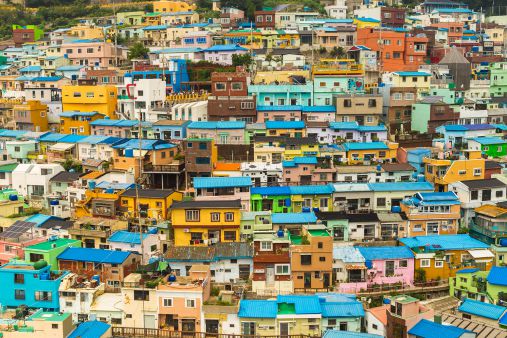Whilst progress has been greatest in the Asia-Pacific region, many of the most eye-catching improvements have been seen in sub-Saharan Africa. Nine out of the ten countries to experience the greatest improvements in the past decade are located in the region, with The Gambia — the world’s most improved nation in terms of poverty reduction — seeing its poverty rate fall by as many as 36 percentage points. Similarly, Tanzania has experienced one of the largest falls in poverty seen anywhere in the world in the decade following the turn of the millennium, almost halving its extreme poverty rate between 2000 and 2011. Less than half of the Tanzanian population was living in extreme poverty in 2011, down from 86% in 2000.
Living Conditions Spotlight: The mission to eradicate poverty

Prior to the COVID-19 pandemic, we had seen steady improvements in Living Conditions around the world, not least because of progress in reducing poverty. Over the decade leading up to 2020, the proportion of people living in extreme poverty fell from 18% to 12%, with some 97 of the 167 nations featured in the Index recording an improvement since 2011.
Prior to the COVID-19 pandemic, we had seen steady improvements in Living Conditions around the world, not least because of progress in reducing poverty. Over the decade leading up to 2020, the proportion of people living in extreme poverty fell from 18% to 12%, with some 97 of the 167 nations featured in the Index recording an improvement since 2011.
However, these gains have been placed in serious jeopardy by the impact of the COVID-19 pandemic. The World Bank estimates that the virus has resulted in an additional 120 million people being in poverty. The rise means that more than 9% of the world’s population — half of them children — are estimated to now live in extreme poverty, a rate last seen in 2017.
The impact of the pandemic threatens to reverse much of the recent progress seen in sub-Saharan African nations, which remain home to some 40% of all people living in extreme poverty. Many of those who have recently created their own pathway out of poverty remain vulnerable, with the number of households able to source emergency funds falling by seven percentage points between 2014 and 2017.
Rising poverty rates threaten to expose a growing number of people to a raft of disadvantages which, all too often, combine to prevent them from fulfilling their unique potential. Extensive research over the past half century has established a clear link between poverty and issues such as malnutrition, poor physical and mental health, as well as lower educational outcomes, income, and life expectancy.
Furthermore, poverty contributes to instability. More than 40% of the global poor live in economies affected by fragility, conflict, and violence, despite the fact that those nations account for just 10% of the world’s population. This is a particular cause for concern in nations where the number of people living on less than $1.90 a day had increased in the past year, including South Sudan, Zimbabwe, and Yemen.
The huge numbers of people who have created their own pathway of out of extreme poverty around the world in recent decades is nothing short of extraordinary. However, the impact of the pandemic shows that such progress cannot be taken for granted. With sub-Saharan Africa increasingly the focus for much of the world’s efforts to address the drivers of extreme poverty and build an enabling environment, maintaining momentum will be a pressing priority for the continent’s leaders.
Did
you know?
Nearly 1.1 billion people have worked their way out of extreme poverty since 1990. However, whilst extreme poverty has been steadily declining, levels rose in 2020 for the first time in over 20 years. In total, an additional 120 million people are believed to be living in poverty in 2021 as a result of the COVID-19 pandemic.





